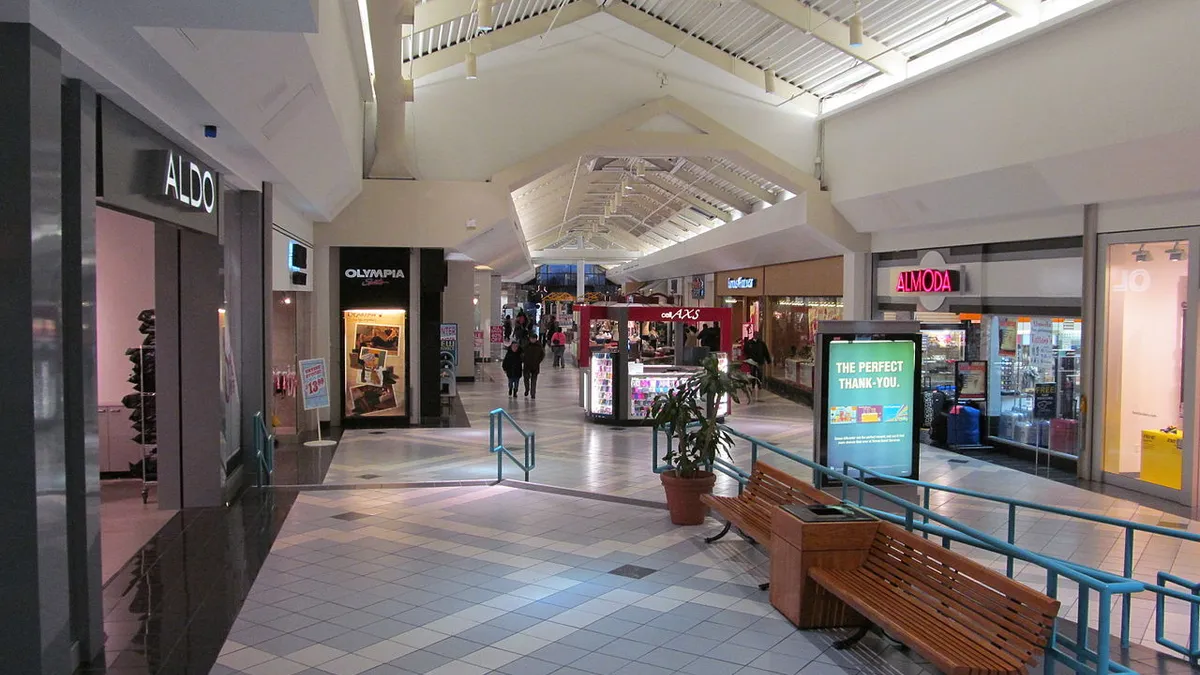Dive Brief:
-
The retail vacancy rate in the third quarter declined to 10.1%, from the 10.2% of both last quarter and the third quarter last year. But the average mall vacancy rate has reached an eight-year high, inching up 0.1% from last quarter to 9.4%, according to real estate research firm Reis.
-
Rent rose 0.2% for the quarter and 0.6% for the year, according to a report emailed to Retail Dive. Asking and effective rent both rose 0.3% in the quarter, but that was down from last quarter's 0.4% rise.
-
Supply and demand for retail space both decelerated in the quarter, "as fewer developers build traditional neighborhood and community shopping center space," wrote Reis Senior Economist Barbara Byrne Denham. "Still, tenants are leasing stores in what is getting built as shoppers prefer the new over the old in any market."
Dive Insight:
Landlords are scrambling to fill vacant retail space and will have to scramble all the more as Forever 21 this week said it would add 178 stores to a closure count that has already surpassed last year's grim total.
Retailers so far in 2019 have closed nearly 7,300 stores, which so early in the year is not only more than 2018 but more than in any other full year, according to accounting and consulting firm BDO.
But in her report, Denham downplayed that latest loss and said the market can withstand it.
"The retail sector has withstood numerous store closings, this latest one should not deliver a big blow," she said of the fast-fashion retailer's announcement. "Retail spending remains healthy as consumer spending keeps climbing in step with job growth. In short, the retail sector is poised to continue to grow at the current slow but steady rate."
The report seems to underscore that regional malls are doing worse compared to strip-style centers. Such malls have traditionally been anchored by department stores, which have been falling like dominoes. Sears, J.C. Penney and Macy's have also exited malls as they shuttered hundreds of locations in the past few years.
Their departures have fed a vicious cycle, where the resulting traffic decline hurts other mall tenants, which in turn close or open their hands to re-negotiate rents. "Many malls now have only one, maybe two anchors, where they once had three or more," Keith Jelinek, Managing Director at Berkeley Research Group, told Retail Dive in an interview. Traditional malls are less convenient to shop than community strip centers, at a time when consumers are pressed for time and anxious for convenience, he also said.
That has prompted the likes of GNC and even Gap to consider those strip-style locations, where traffic is fairly low but conversion often higher.
Still, many landlords are finding new tenants, though not always retailers. Movie theaters, doctor's offices and municipal motor vehicle departments are increasingly found in malls, Jelinek said. In some areas, churches have also started taking over anchor locations or even entire malls.
While how much that helps retail remains an open question, it could be helping support rent in some areas. "Although retail store closures and bankruptcies still dominate the news, the overall retail property statistics have held steady as new users fill vacated space of large department stores," according to the Reis report.














